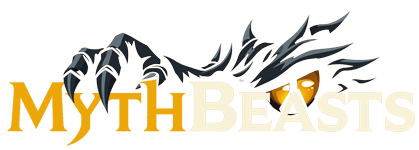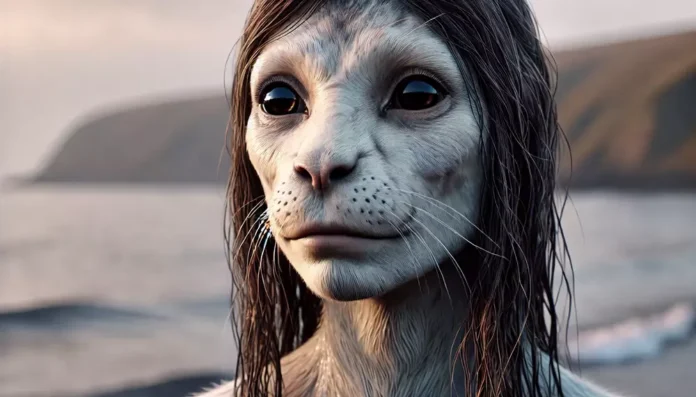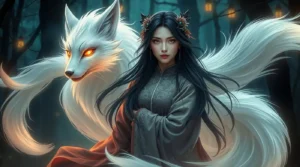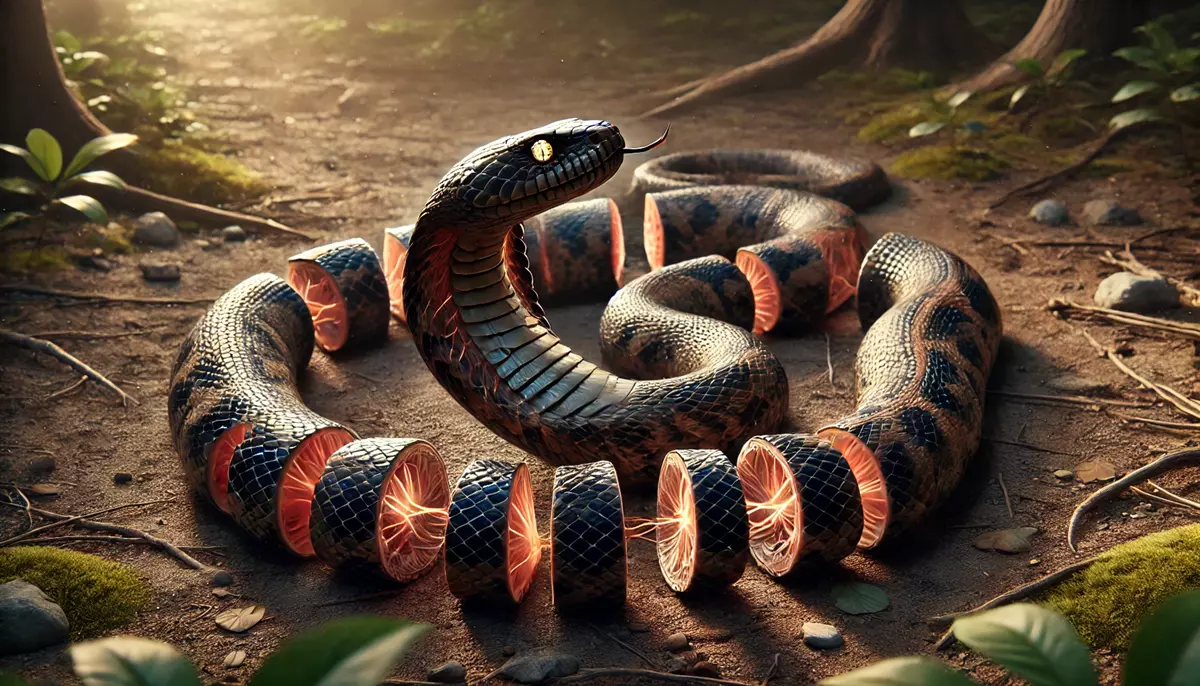Introduction
Selkies, beings from Scottish and Irish folklore, are known for their unique ability to transform between human and seal forms. These creatures are bound to the ocean but are drawn to the shore, often engaging with humans in stories of love, loss, and longing. According to legend, Selkies can shift into human form by shedding their seal skin, making them vulnerable if it’s taken from them.
They symbolize freedom and the mystique of the sea, embodying themes of desire and the dichotomy of land and water. This legendary creature, rooted in the medieval Scottish Isles, reflects the complexity of human relationships with nature.
History/Origin
The legend of Selkies originates from the Orkney and Shetland Isles of Scotland, where stories of these mystical beings have circulated since the medieval period. Historically, the tales of Selkies were shared orally among fishing communities that relied on the sea for survival. In these harsh, isolated environments, the sea represented both sustenance and danger, making it a fitting setting for tales of beings that straddled the boundary between human and marine life.
The term “Selkie” derives from the Scots word “selich,” meaning seal. Early references to these creatures in Scottish folklore portrayed them as gentle, otherworldly beings who were sometimes drawn to humans, despite their inherent attachment to the ocean. In Scottish folklore, the Selkie tale often involved a human falling in love with a Selkie in human form, only to face the tragedy of losing them when they returned to the sea.
One of the earliest documented references to Selkies comes from Norse mythology, where creatures called “Finnfolk” or “Sea Sami” were thought to resemble Selkies. The Orkneyinga Saga, an Icelandic saga dating to the 13th century, also makes mention of “seal-folk,” creatures who could move between land and sea. These tales may have influenced the eventual characterization of Selkies in Scottish folklore. According to the saga, “They moved in silence, creatures of two worlds, their fates entangled with the tides.” This quote encapsulates the dual nature of Selkies, highlighting their ethereal qualities and the inevitable pull of the sea.
Name Meaning
The term “Selkie” is rooted in the Old Scots language, where “selich” refers to seals. Selkies are often called “seal folk” or “seal people” in English. This name emphasizes their connection to seals, distinguishing them from other shapeshifters in mythology. Unlike werewolves or other animal-human hybrids, Selkies are gentle beings who seek companionship rather than causing harm. The name highlights their unique ability to exist in two worlds—both the land of humans and the mysterious depths of the sea.
Background Story
A central tale involving Selkies is that of the “Selkie Wife,” a story shared across the Scottish Isles. In this tale, a fisherman finds a Selkie woman’s discarded seal skin on the shore, enabling her to transform into a human. Captivated by her beauty, he hides her skin and persuades her to marry him. The Selkie woman becomes his devoted wife, bearing him children, yet she always longs to return to the sea. Eventually, she discovers her hidden seal skin and, despite her love for her family, is compelled to return to the ocean, leaving her human life behind.
The tragic story encapsulates the themes of desire and loss, showing how Selkies, despite their love for human life, are ultimately bound to the sea. This enduring legend reflects the sorrow that accompanies separation and the struggle between freedom and attachment. A line from the tale reads, “Though she walked upon the shore, her heart remained in the depths,” capturing the Selkie’s inherent yearning for the ocean and the inevitable return to their true nature.
Cultural Impact
Selkies have had a profound impact on Scottish culture, particularly in regions where fishing communities relied on the ocean. In the Orkney and Shetland Isles, Selkies symbolize the delicate relationship between humans and the sea. Their myth reflects the idea that the sea can be both alluring and treacherous, a force that sustains but can also take away.
In Scottish literature and poetry, Selkies are often used as metaphors for unattainable love or elusive happiness. One of the most famous examples is the traditional Scottish ballad “The Great Selkie of Sule Skerry,” where a Selkie reveals himself to a woman, fathering a child before returning to the sea. The ballad captures the mystical allure of the Selkie, symbolizing the enigmatic, fleeting quality of the ocean and its creatures.
Folklore Festivals in Scotland, such as those held in Orkney, often include retellings of Selkie tales, keeping the myth alive for contemporary audiences. In these stories, the Selkie embodies both beauty and sorrow, captivating listeners with themes of love, freedom, and fate. One festival attendee remarked, “The Selkie’s tale resonates because it mirrors our own struggle with where we belong.” This connection between personal identity and mythological creatures demonstrates the enduring relevance of Selkie stories.
Additionally, Selkies are celebrated in Scottish folk art, where they are often depicted in artwork featuring both their human and seal forms. These representations focus on the mystery and beauty of these creatures, using imagery that emphasizes their connection to the sea.
Similar Beasts
Selkies belong to a broader family of mythological beings known for their shapeshifting abilities and connection to the natural world, particularly water. Here are some similar creatures from other cultures that share attributes with the Selkie:
Mermaids (Europe) – Perhaps the most famous mythological water beings, mermaids are also connected to the ocean and sometimes interact with humans. While they lack the dual land-sea transformation ability of Selkies, mermaids share themes of mystery, beauty, and longing for the sea.
Kelpies (Scotland) – Kelpies are water spirits from Scottish folklore, often appearing as horses that lure humans to water. While they differ in appearance, both Kelpies and Selkies have connections to the sea and represent the enchanting yet potentially treacherous nature of water.
Finnfolk (Norse/Orkney) – In Norse and Orcadian folklore, Finnfolk are magical beings with close ties to the sea, often seen as capable of shapeshifting and sometimes entering human society. They are sometimes considered predecessors or close relatives of Selkies in northern Scottish lore.
Nagas (Hindu/Buddhist mythology) – Nagas are serpentine beings capable of taking on a human form. Found in Hindu and Buddhist mythology, they inhabit water sources like rivers and lakes. Nagas and Selkies both represent the idea of creatures dwelling between realms (land and water), embodying the natural forces they inhabit.
Ningyo (Japanese folklore) – Japanese Ningyo are fish-like creatures often associated with misfortune but also said to bring longevity if consumed. Though unlike Selkies in form, Ningyo share the Selkie’s mystique and connection to the water, often embodying both beauty and a haunting quality.
These similar beings highlight the universal appeal of shapeshifting and water-associated creatures in folklore, with each culture bringing unique qualities to these mythological figures. They underscore the allure and fear humans hold for the sea and the creatures that inhabit its depths, reinforcing the Selkie’s place among global water spirits and shapeshifters.
Religion/Ritual
Though Selkies do not have a direct association with organized religion, they are central to certain folk rituals in the Orkney and Shetland Isles. Fishermen would sometimes perform small ceremonies before setting sail, invoking Selkies or other sea spirits for protection and safe passage. While these rituals were not religious in a formal sense, they were deeply spiritual, reflecting the belief that sea creatures like Selkies held some control over the ocean’s temperament.
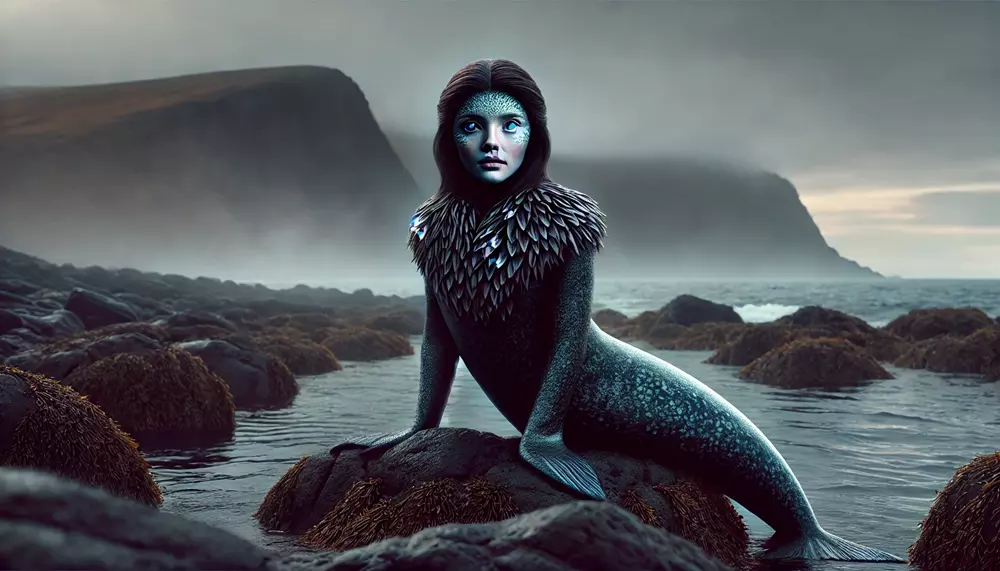
In certain communities, it was also customary to leave offerings on the shore, hoping to appease the Selkies or ensure calm seas. These offerings, typically small tokens or food, symbolized respect for the mysterious beings of the ocean. While not a formal religious practice, these acts reflect a spiritual understanding of the ocean’s power and the beings within it.
Scientific or Rational Explanations
Some historians and folklorists believe that Selkie myths may have originated from real-life sightings of Arctic seals, particularly by isolated coastal communities who were unfamiliar with the creatures. The peculiar appearance and behavior of these seals could have inspired stories of shape-shifting beings. Selkies are often depicted as having deep, expressive eyes, a trait that could have been inspired by the actual appearance of seals, which are known for their soulful, human-like gaze.
Other theories suggest that Selkie legends may have been influenced by Norse folklore and stories of the Finnfolk, an aquatic race of people with shape-shifting abilities. The influence of Norse settlers in the Orkney and Shetland Isles likely contributed to the blending of native Scottish beliefs with Norse myths, creating a unique tradition around Selkies. Folklorist John Gregorson Campbell wrote, “The sea’s mysteries are manifold, and in it, man finds both fear and solace.” This belief in the mystery and danger of the sea further illustrates why Selkies became an integral part of Scottish maritime folklore.
Modern Cultural References
Selkies have become popular figures in modern media, particularly in literature, film, and art, where they continue to inspire stories about love, transformation, and loss.
Film – The 1994 movie The Secret of Roan Inish, directed by John Sayles, is a well-known film adaptation based on Selkie folklore. The story follows a young girl who uncovers her family’s connection to Selkies, blending the myth with themes of family and identity.
Literature – In Scottish author George Mackay Brown’s poem The Selkie of Sule Skerry, the tale of the Selkie’s transformation and return to the sea is retold with lyrical beauty, capturing the timeless nature of the myth.
Animated Film – Song of the Sea, an Oscar-nominated animated film by Cartoon Saloon, draws on Selkie folklore to tell the story of a young girl discovering her Selkie heritage. The film uses traditional Irish and Scottish folklore as a backdrop, highlighting the beauty and tragedy of Selkie stories.
Graphic Novels – Through the Woods by Emily Carroll includes a story titled “A Lady’s Hands Are Cold,” inspired by Selkie myths. The graphic novel uses dark, haunting imagery to evoke the atmosphere of Selkie tales.
Art – Contemporary artists often depict Selkies in their work, emphasizing the creature’s dual nature. Some portray them in their human form, gazing longingly at the ocean, while others focus on their seal characteristics, reinforcing their connection to the sea.
Conclusion
The Selkie of Scottish and Irish folklore is more than a mythical creature; it represents the human struggle between freedom and belonging. Rooted in the Scottish Isles’ rugged coastal culture, Selkie tales are both enchanting and sorrowful, capturing the allure of the sea and the inevitable pull of one’s true nature. Their impact endures in literature, film, and art, where Selkies continue to symbolize themes of love, transformation, and longing. Through their stories, Selkies remind us of the delicate balance between land and sea, freedom and attachment, human and nature.
